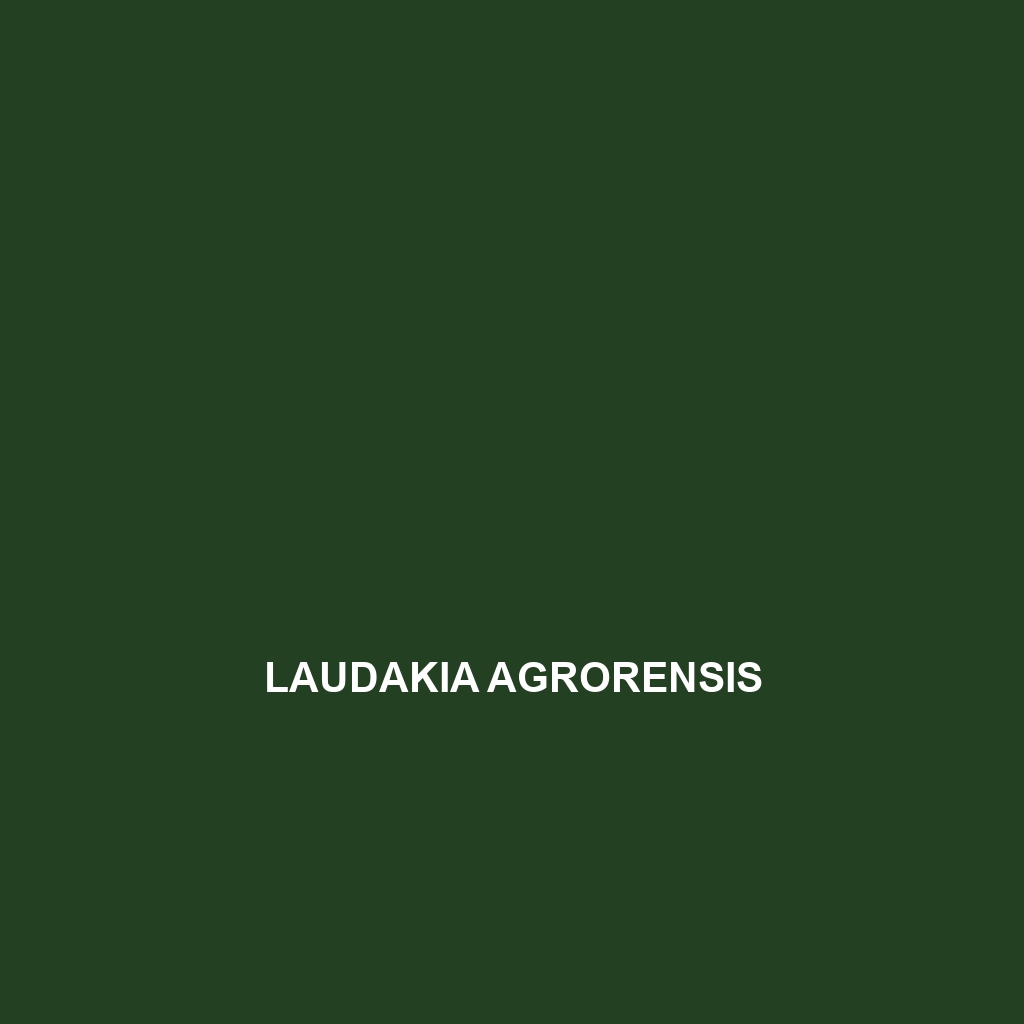Common Name
Laudakia agrorensis
Scientific Name
Laudakia agrorensis
Habitat
Laudakia agrorensis, commonly known as the Agror lizard, is primarily found in the rugged mountain regions of Central Asia, especially within the northern parts of Pakistan and adjacent territories. This species thrives in arid environments, particularly in rocky outcrops, grasslands, and dry scrub habitats. The climate in these areas can be characterized as harsh, with significant temperature fluctuations between day and night, as well as a scarcity of moisture. The Agror lizard prefers habitats that provide ample sun exposure while also offering shelter from predators and extreme weather conditions, making them well-adapted to the semi-arid and temperate ecosystems they inhabit. Their preference for rocky terrains helps them to blend seamlessly into their surroundings, providing both opportunities for hunting and evasion from threats.
Physical Characteristics
The Laudakia agrorensis exhibits a distinctive physical appearance that makes it easily recognizable. Adults typically measure between 20 to 30 cm in length, with a robust body and a flattened head. One of the striking features of this species is its coloration; they generally display a mix of browns, grays, and tans that aid in camouflage against the rocky landscapes. During the breeding season, males may exhibit brighter colors, particularly around the throats. Their skin features small, granular scales that contribute to their rough texture, which is characteristic of many lizard species adapted to dry habitats. Additionally, the Agror lizard displays prominent spines along the back that serve both as a defensive mechanism and a visual signal to deter rivals.
Behavior
In terms of behavior, Laudakia agrorensis is known for its diurnal habits, being most active during the daylight hours. These lizards often bask in the sun to regulate their body temperature and can be seen actively foraging during warm afternoons. Their social interactions are generally limited but can become aggressive during the mating season, with males engaging in territorial displays. Notably, they are skilled climbers, often spotted scaling rocky surfaces in search of food or shelter. A fascinating aspect of their behavior includes their ability to change color slightly based on their surroundings, a characteristic useful for both camouflage and signaling to potential mates.
Diet
The dietary habits of Laudakia agrorensis classify it as an omnivore. Its diet primarily consists of various insects, small invertebrates, and plant matter, allowing it to adapt well to the availability of food sources in its habitat. Spiders, beetles, and grasshoppers are common prey items, while leaves and flowers supplement their intake of necessary nutrients. The hunting technique involves a combination of stealth and quick movements, which are essential for capturing fast-moving insects. During periods of food scarcity, these lizards may also resort to scavenging, utilizing opportunistic feeding strategies to survive adverse conditions.
Reproduction
The reproductive cycle of Laudakia agrorensis typically occurs in the spring, coinciding with rising temperatures and increased food availability. Males perform elaborate courtship displays to attract females, which may include head bobbing and color changes. After successful mating, females will lay between 4 to 10 eggs in a sandy burrow or under rocky crevices, ensuring the embryos are protected from potential predators. The incubation period lasts approximately 30 to 45 days, after which hatchlings emerge fully independent and capable of foraging for themselves. Parental care is minimal, a common trait among many lizard species.
Conservation Status
According to the International Union for Conservation of Nature (IUCN), Laudakia agrorensis is currently listed as Least Concern, indicating that it does not face immediate threats to its survival. However, ongoing habitat destruction due to human activities and climate change poses potential risks to its population stability. Efforts to monitor and preserve their natural habitats are vital for the sustainability of the species. Local conservationists continue to advocate for the protection of these arid ecosystems to ensure that the Agror lizard can thrive sustainably.
Interesting Facts
A remarkable feature of Laudakia agrorensis is their ability to adapt rapidly to changes in their environment. For example, some individuals have been observed engaging in unique social behaviors such as cooperative basking, where multiple lizards share heat from exposed rocks to regulate their body temperatures. Additionally, they possess a sophisticated method of communicating through head movements and body language, which signifies readiness to mate or establish dominance.
Role in Ecosystem
Laudakia agrorensis plays an important role in its ecosystem as both a predator and prey. As an omnivore, it assists in controlling insect populations, which can contribute to the overall health of its environment. Additionally, by serving as prey for larger predators, they are an integral part of the food web. Their activities help to promote biodiversity by contributing to seed dispersal when feeding on plants, thus maintaining ecological balance in their habitat. Recognizing species such as the Agror lizard is essential for understanding the intricate relationships that exist within arid ecosystems.
